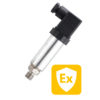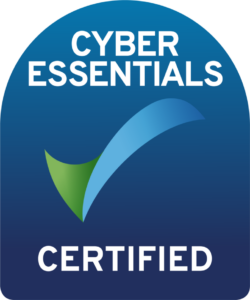However demanding your application and environment, we can provide you with a complete ATEX monitoring system. Our range of ATEX pressure sensors and transmitters are available in gauge, absolute, vacuum, differential and compound pressure measurement, with custom pressure ranges and all with a 4-20mA output. Our ATEX rated load cells can also be supplied with suitable Zener Barriers enabling you to safely connect the load cells to any electronic device outside of the hazardous area.
Please note that this page provides helpful information only, detailed reference should be taken from an appropriate accredited agency or organisation.
The term ATEX refers to 2 European Directives. The first being the ATEX 137 Workplace Directive and the second is the ATEX 95 Equipment Directive.
- The ATEX 137 Workplace Directive (also known as 99/92/EC) relates to the minimum requirements needed for the protection of the workforce who may be at risk in explosive atmospheres.
- The ATEX 95 Equipment Directive (also known as 94/9/EC) relates to the use of equipment and systems in potentially explosive atmospheres.
| Zone | Hazard | Protection Concepts |
|---|---|---|
| 0 | In which an explosive gas/air mixture is continuously present for long periods. | Exia or Exs |
| 1 | In which an explosive gas/air mixture is likely to occur in normal operation. | Exd. Exe, Exib, Exp, Exia, Exs |
| 2 | In which an explosive gas/air mixture is not likely to occur in normal operation. | All concepts suitable for Zone 0 & 1, ExN, ExO and Exq |
| Method Of Protection | Permitted Zone Of Use In UK | Code Letter IEC, EX.., CENELEC, EEX |
|---|---|---|
| General requirement | - | - |
| Oil immersion | 2 | o |
| Pressurisation | 1 or 2 | p |
| Powder filling | 2 | q |
| Flameproof | 1 or 2 | d |
| Increased safety | 1 or 2 | e |
| Intrinsic safety | * 0, 1 or 2 | ia or ib |
| Non-incendive | 2 | n # |
| Encapsulation | 1 or 2 | m |
| Special | 1 or 2 | s |
| * ia: Zone 0, 1, 2 / ib: Zone 1 or 2 but not Zone 0 | # n: used locally in UK | ||
| Gas # Group CENELEC EN 5014, IEC | Representative Gas |
|---|---|
| I * (mining) | Methane |
| IIA | Propane |
| IIB | Ethylene |
| IIC | Hydrogen |
| T Class / IEC 79-7 | Max. Surface Temp °C |
|---|---|
| T1 | 450°C |
| T2 | 300°C |
| T3 | 200°C |
| T4 | 135°C |
| T5 | 100°C |
| T6 | 85°C |
| [ | E | Ex | ia | ] | IIC | T4 |
|---|---|---|---|---|---|---|
| Associated apparatus* | Certified to the CENELEC standard | Explosion protected | Protection concept (IS) | Associated apparatus* | Apparatus group (gas group) | Temperature classification (not Gp I) |
| * (located in safe area and may be connected to hazardous area) | ||||||
| Device Group | Device Category | Zone |
|---|---|---|
| I | M = Mining | - |
| Mining | M 1 | - |
| Pit Gas &/or Flammable Dusts | M 2 | - |
| II | G = Gas | |
| Other Areas | 1 G | 0, 1, 2 |
| Explosive Atmosphere | 2 G | 1, 2 |
| 3 G | 2 | |
| D is added after G in the certification class number | D = Dust | |
| (i.e. GD) if device is dust category approved also | 1 D | 20, 21, 22 |
| 2 D | 21, 22 | |
| 3 D | 22 | |
| Explanation of the categories: 1 - Very high safety = device safety must be guaranteed even in case of rare device failures, e.g. simultaneous failure of two components. 2 - High safety = device safety must be guaranteed if frequent failures can be expected, e.g. failure of one component. 3 – Safe in normal operation = device safety must be guaranteed in normal operation. Note: A number in brackets before device category designation signifies that the device meets the requirements of an additional category to the main one that is specified. Example: II (1) 2G signifies that the device meets requirements for both 1 G and 2 G categories |
||

If you like this article, please share it with others
Find this article interesting? Have a read of our other sensor reference articles.
Have an ATEX application you want to discuss? Let us call you…
Characteristics of Substances
Flashpoint
This is the lowest temperature at which a liquid generates sufficient vapour to support ignition. This vapour can be ignited in many ways including temperature or energy (i.e. a spark).
Ignition Temperature
This is the lowest temperature at which the vapour will be ignited. This defines the temperature class.
Classification of Maximum Surface Temperatures of Electrical Apparatus (CENELEC)| Temp. Class | Max. Surface Temp. |
|---|---|
| T1 | <450ºC |
| T2 | <300ºC |
| T3 | <200ºC |
| T4 | <135ºC |
| T5 | <100ºC |
| T6 | <85ºC |
Apparatus Group (Energy Ignition)
All surface industry gases/vapours are classed as Group II gases. Group II is divided into 3 sub groups:
- IIA – High energy is required to ignite. Less intense explosion. (Propane)
- IIB – Less energy is required to ignite. More intense explosion. (Ethylene)
- IIC – Little energy is required to ignite. Most intense explosion. (Hydrogen)
| Gas/Vapour | Flashpoint | Gas Group | Ignition Temp. | Temp. Class |
|---|---|---|---|---|
| Acetone | 19ºC | IIA | 535ºC | T1 |
| Butane | -60ºC | IIA | 365ºC | T2 |
| Heptane | -4ºC | IIA | 215ºC | T3 |
| Ethyl Methyl Ether | 37ºC | IIB | 190ºC | T4 |
| Note: There is no connection between ignition energy and ignition temperature | ||||
Find this article interesting? Have a read of our other sensor reference articles.
Interested in our ATEX products? Let us call you…
Why Us?
- Suppliers of top quality strain gauge sensors and transducers to every corner of industry – UK and worldwide
- Over 100 years of expert transducer knowledge
- Our high quality products all come with a 3 year warranty






